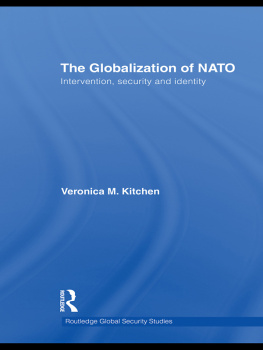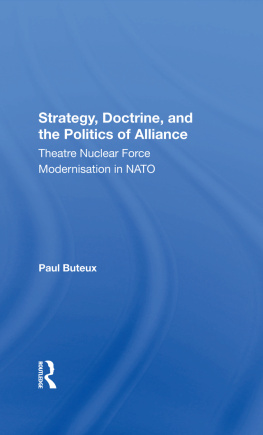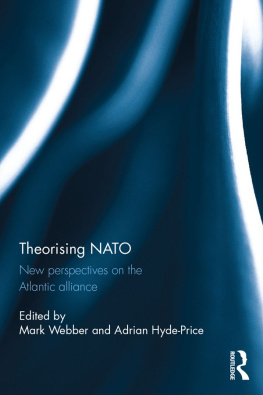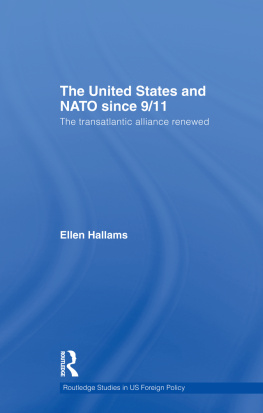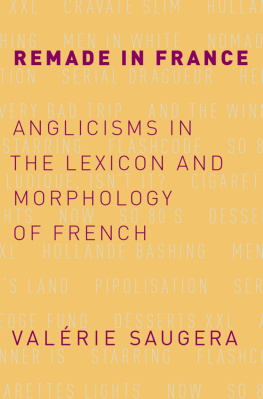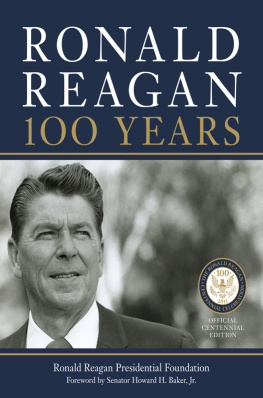The Council on Foreign Relations, Inc., a nonprofit, nonpartisan national membership organization founded in 1921, is dedicated to promoting understanding of international affairs through the free and civil exchange of ideas. The councils members are dedicated to the belief that Americas peace and prosperity are firmly linked to that of the world. From this flows the mission of the Council: to foster Americas understanding of other nationstheir peoples, cultures, histories, hopes, quarrels, and ambitionsand thus to serve our nation through study and debate, private and public.
From time to time books and reports written by members of the Councils research staff or others are published as A Council on Foreign Relations Book.
THE COUNCIL TAKES NO INSTITUTIONAL POSITION ON POLICY ISSUES AND HAS NO AFFILIATION WITH THE U.S. GOVERNMENT. ALL STATEMENTS OF FACT AND EXPRESSIONS OF OPINION CONTAINED IN ALL ITS PUBLICATIONS ARE THE SOLE RESPONSIBILITY OF THE AUTHOR.
Columbia University
Press Publishers Since 1893
New York, Chichester, West Sussex
cup.columbia.edu
Copyright 2002 Columbia University Press
All rights Reserved
E-ISBN 978-0-231-50239-9
Library of Congress Cataloging-in-Publication Data
Asmus, Ronald D.
Opening NATOs door : how the alliance remade itself for a new era / Ronald D. Asmus.
p. cm.
A Council on Foreign Relations book.
Includes bibliographical references and index
ISBN 0231-12776-6 (cloth : alk. paper)
1. North Atlantic Treaty OrganizationMembership. 2. United StatesForeign relations1989 3. National securityEurope. 4. Peaceful change (International relations) 5. Post-communismEurope. 6. Intervention (International law) I. Title
UA646.3 A82 2002
355.031091821dc21
2002073637
A Columbia University Press E-book.
CUP would be pleased to hear about your reading experience with this e-book at .
The North Atlantic Treaty Organizations invocation of Article 5 in the wake of the terrorist attacks on the United States on September 11, 2001 was a vivid reminder of how fundamentally our security environment has changed. The frozen certainties of the Cold War threat to Europe have given way to an entirely new set of challenges, much different, but no less menacing than those of the past.
The invocation of NATOs collective self-defense clause, for the first time ever in its history, and in response to a terrorist attack on the United States, also demonstrated how much the Alliance has changed since the demise of communism and the Soviet Union in the early 1990s. Originally founded in 1949 to deter Stalin from attacking Western Europe, NATO was then little more than a U.S. promise of protection to a Europe devastated and demoralized by war. But 53 years later, NATOs Article 5 commitment brought the old world to the aid of the new, to reverse the words of Winston Churchill. If ever one was looking for a demonstration of the undiminished vitality of the transatlantic relationship, this is it.
That NATO could respond so swiftly to the events of September 11 was no coincidence. Throughout the 1990s, the Alliance underwent the most far-reaching changes in its history. And Ron Asmus was one of the key architects of that adaptation. In addition to enlarging to Central and Eastern Europe, NATO reached out to build a new cooperative relationship with Russia, its erstwhile adversary. It also reoriented itself to face new threats beyond its borders and intervened to stop ethnic cleansing and genocide in Bosnia and Kosovo. And it embraced the European Unions efforts to build a European Security and Defense Policy as a step toward a fairer sharing of the transatlantic security burden. Initially a U.S.-West European alliance designed to meet the Russian threat, the Alliance was being transformed into the foundation for a new pan-European alliance between North America and a Europe whole and free.
Behind this transformation lay the conviction that NATO was not just a temporary Cold War creation designed by necessity to deter Russian power. Two world wars and fifty years of working together during the Cold War led both sides of the Atlantic to conclude that the virtues of their strategic partnership transcended the communist or any other specific threat. The Atlantic Alliance is the expression of a community of North American and European democracies based on common values and interests. As NATO heads of state put it in a declaration at their fiftieth anniversary summit in Washington in the spring of 1999, NATO must be adapted so that it is as good in meeting the threats of the 21st century as it was in fighting the Cold War.
In November 2002, at its summit meeting in Prague, NATO will confront a new set of challenges. It must now complete the vision of a Europe whole and free that stretches, in the words of President George W. Bush, from the Baltic to the Black Sea and enlarge to new members willing and able to shoulder the burdens of membership. The terrorist attacks on the United States have only reinforced the desire to consolidate peace and democracy in postCold War Europe. A strong and stable Europe is a key asset at a time when American and Western security is under attack elsewhere.
But the war on terrorism has also highlighted the continuing importance of allies and alliances. Today Western democracies face new, potentially existential threats to their security in the form of terrorism and weapons of mass destruction. Our Alliance must be modernized and adapted to face this threat if we are to live up to the principles NATO was founded on. This modernization must not be confined to developing new strategies or working methods. It must entail, above all, a commitment to build the necessary military capabilities. This is a challenge for NATO Allies as well as for those who aspire to join the Alliance. Our still-young century has already taught us a lesson we must heed as we continue NATOs modernization: that you cannot have defense on the cheap.
In Opening NATOs Door, Ron Asmus provides us with a definitive and insiders account of the first chapter in NATOs modernization after the end of the Cold War. He takes us behind the scenes in Washington and into the diplomatic corridors of Europe to tell the story of the debates that took place in the early and mid-1990s as the U.S. and its European allies grappled to define the Alliances postCold War strategic direction in the wake of communisms collapse. He shows how the initial impulse for NATO enlargement came from dissidents-turned-diplomats in Central and Eastern Europe and how it was eventually embraced by U.S. and European leaders. Above all, he provides us with an insiders view on how Washingtons own views and those of its allies evolved as NATO grappled with how to turn enlargement from a noble idea into political reality.
Opening NATOs Door documents the diplomacy, some of it dramatic, that took place in the run-up to the NATO Brussels summit in January 1994 and, above all, during the run-up to the Madrid summit in July 1997. At the same time, he highlights how, from its inception, NATO enlargement was about more than just consolidating the peace in Central and Eastern Europe. His detailing of the intense negotiations that produced the signing of the NATO-Russia Founding Act documents the lengths to which the Alliance went to create a new relationship with Moscow and to give it a place in a new European security order. He offers some vivid insights into the political battle that took place both in public and behind the scenes in Washington and the building of a true bipartisan consensus for the ratification of enlargement by the U.S. Senate in the spring of 1998.




